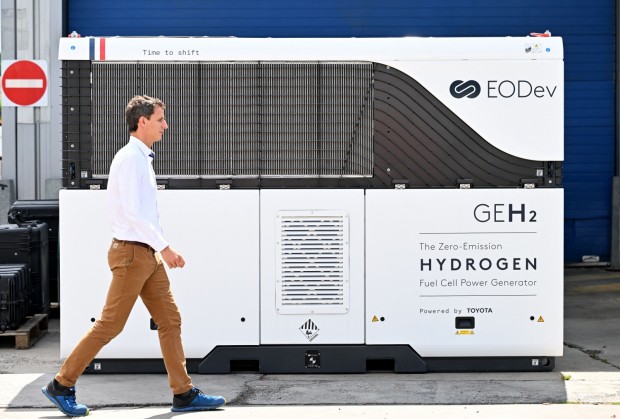The wastewater collection process at the Advanced Water Recycling Centre (AWRC) in Sydney will be powered by hydrogen power that will reduce carbon emissions. When the facility has been completed, it will be able to provide services to hundreds of thousands of residents in the surrounding area.

(Photo : Getty Images/EMMANUEL DUNAND)
Reducing Carbon Emissions Through Hydrogen Power
John Holland, Sydney Water's construction partner, proposed the idea of replacing the diesel field generator with a hydrogen generator while the company was looking for techniques to minimize its carbon emissions during the building process of the Upper South Creek Advanced Water Recycling Centre (AWRC) at Kemp Creek which cost $1.2 billion. As part of their collaborative effort, the firms tested a breakthrough hydrogen generator for 28 days to assist in powering the AWRC building.
In addition to assisting growth until 2056, the facility will provide services to the Western Sydney Aerotropolis growth area and portions of the Camden and Liverpool local government areas. By using a hydrogen generator with a capacity of 100 kilovolt-amperes (kVA) instead of a conventional diesel-powered generator for an entire year of operation, they would reportedly be able to prevent the emission of 152 tons of greenhouse gases into the atmosphere.
Every year, the elimination of fifty automobiles from the highways of Australia would be equivalent to the transition to clean-emitting hydrogen generators, such as those that Sydney Water is testing at Upper South Creek. The shift of Sydney Water's construction projects to machinery driven by hydrogen is another step towards drastically decreasing the carbon footprint generally associated with large-scale infrastructure construction. If the experiment is successful, this change will take place.
On the other hand, to achieve net zero carbon emissions in our operations by 2030 and net zero carbon emissions in our supplier chain by 2040, Sydney Water has said that it intends to achieve these achievements.
Also Read: ArtBridge Projects Highlights Outdoor Art Exhibitions Across New York's 300-Mile Construction Zones
Beneficiaries of Hydrogen Power
Hydrogen-powered machinery is significantly less noisy than diesel-powered machinery, another significant advantage of using hydrogen-powered machinery. Construction projects located in noise-sensitive regions, such as urban environments or communities close to residential areas, can benefit tremendously from this strategy.
After it is built, the AWRC plant will be one of the southern hemisphere's most modern wastewater recycling facilities. It will be situated in Western Parkland City, between Kemps and South Creek, and it will provide services to as many as 400,000 households in the Western Sydney Aerotropolis Growth region.
Moreover, the power output of the GEH2 Hydrogen generator is comparable to that of a diesel generator because it utilizes a hydrogen fuel cell and a lithium-ion iron phosphate battery. The hydrogen generator, with a capacity of 100 kVA, can supply power to more than 70 houses.
Hydrogen generators offer several advantages that are not available with diesel generators. The energy source hydrogen is regarded as pure. It does not generate damaging greenhouse gasses or pollutants during the combustion process. Since diesel is the fuel that is currently used to power generators and machinery at the majority of construction sites, hydrogen is an environmentally preferable alternative to diesel.
Related Article: Construction Companies Embrace Mass Timber to Drastically Reduce Carbon Footprints, But What's the Catch?







